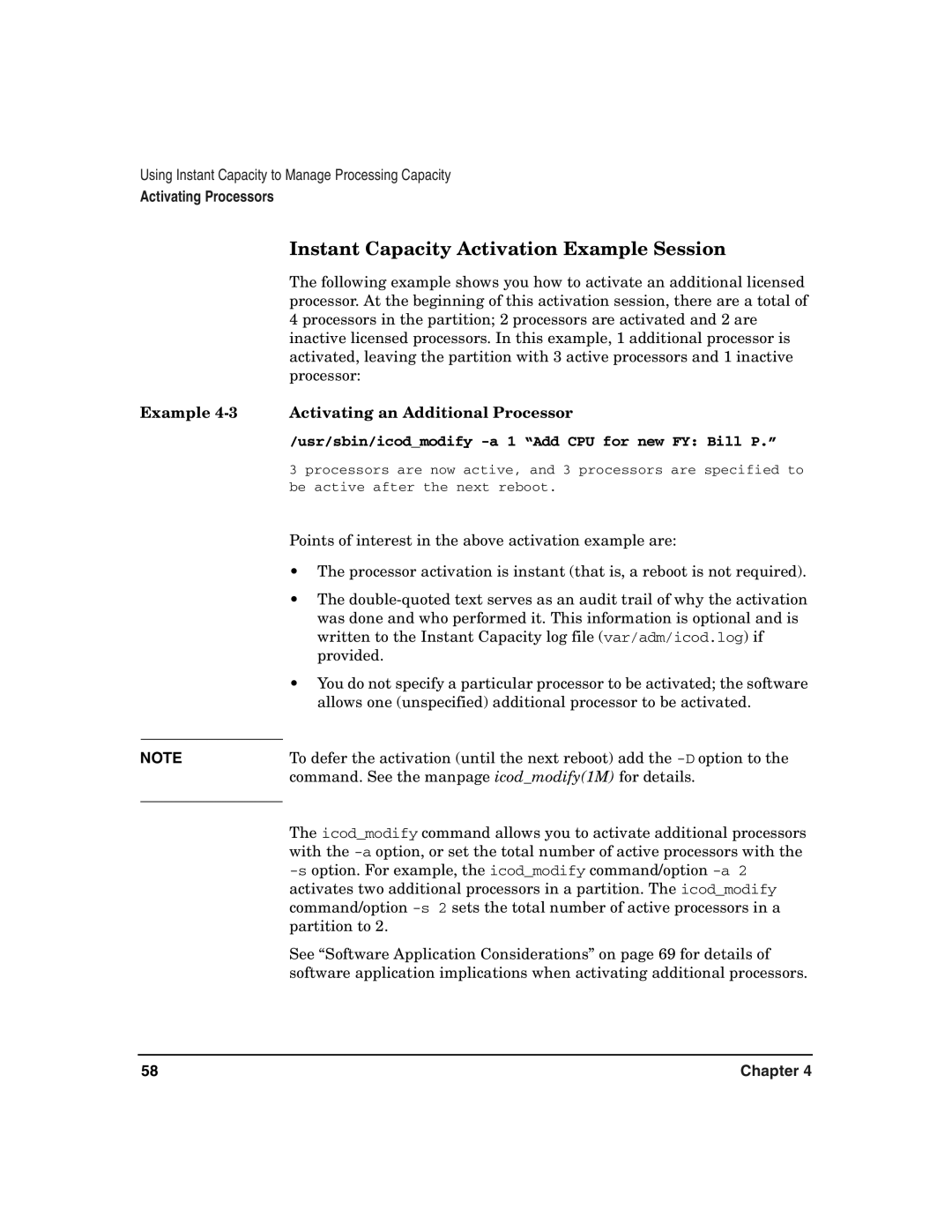
Using Instant Capacity to Manage Processing Capacity
Activating Processors
Instant Capacity Activation Example Session
The following example shows you how to activate an additional licensed processor. At the beginning of this activation session, there are a total of 4 processors in the partition; 2 processors are activated and 2 are inactive licensed processors. In this example, 1 additional processor is activated, leaving the partition with 3 active processors and 1 inactive processor:
Example 4-3 Activating an Additional Processor
/usr/sbin/icod_modify -a 1 “Add CPU for new FY: Bill P.”
3 processors are now active, and 3 processors are specified to be active after the next reboot.
Points of interest in the above activation example are:
•The processor activation is instant (that is, a reboot is not required).
•The
•You do not specify a particular processor to be activated; the software allows one (unspecified) additional processor to be activated.
NOTE | To defer the activation (until the next reboot) add the |
| command. See the manpage icod_modify(1M) for details. |
|
|
The icod_modify command allows you to activate additional processors with the
See “Software Application Considerations” on page 69 for details of software application implications when activating additional processors.
58 | Chapter 4 |
